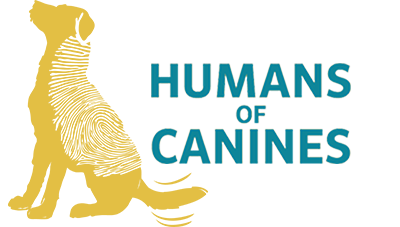By Sonali Pahuja, Intern, Humans of Canines

The traditional forms of psychotherapy have been popular for quite long now. As research progresses, people have been coming up with new and innovative forms of therapies to deal with existing issues. In this article, we will be talking about one such forms of alternative therapy which is Creative Movement Therapy. We will also look at how Humans Of Canines works on the amalgamation of both Animal-Assisted and Creative Movement therapy to treat a wider range of psychological problems.
Creative Movement therapy is a form of therapy that uses a person’s entire body to approach his/her problems specifically on a non-verbal and creative level. A moving body can become the message and the medium to solve deep-rooted issues and problems. Movement therapy helps in recognizing the fact that our body is central to all experiences that we have in our lives and that it is connected to the mind in the form of constant reciprocal interaction. Creative Movement therapy can be applied as a form of psychotherapy in numerous ways such as with music or without music, might include some form of conversation, can be done in groups or on an individual basis and so on. It might involve the therapist actively taking part in the movement exercise or just observing. A session may involve some sort of warm-up exercises just to make the client comfortable emotionally, physically and mentally. Usually, movement therapy sessions might also have a theme which emerges as the session goes on or can be established at the beginning of the session. The session also needs to have a closure exercise that brings the body back to a state of calm and it also usually involves venting out what the person is feeling at that moment. Movement therapy has been around for a long time but only gained popularity in recent times compared to other psychotherapies.
We at Humans Of Canines offer Creative Movement Therapy as one of our services. Here’s a conversation with our founder and a certified Creative Movement therapist herself, Ms Poorvaja Kumar.
Question: How did you come across Creative Movement therapy?
“I have been a performing artist for most of my life and come from a family where dance is quite valued. Every experience related to dance always made me feel better about certain stressors in my life and gave me the strength to deal with those. Dance also acted as a cathartic exercise where I could release any pent up tension and stress. I was always curious and equally intrigued by the impact that dance or other forms of creative arts therapies could have on an individual. I was also a Psychology student and hence decided to explore the field of Creative Movement therapy in a more structured and scientific manner. Being in the mental health sector made me realize the impact that Creative Movement therapy can have on the participants. To take this interest to the new level, I enrolled in a course being offered on the same by the pioneer of Creative Movement therapy in India, Ms Tripura Kashyap. So that’s is basically how I came across this field and it engulfed me in it.”
Question: What is the scope for alternative forms of therapies like Creative Movement Therapy in India?
“In the past few years, Creative Movement therapy has taken a giant leap. Back when I began to learn this form of therapy in 2012, people were not as aware of the structural module that it follows. Most people used to think of it as a dance class as opposed to therapeutic practice. Even when I treaded into this area, I thought that it would be about dance and fun but was relieved to realise that it was a fully structured, goal-oriented and scientific therapeutic process. It is much more widely known and acknowledged in the world and in India now. Since dance and music have been a part of Indian culture for centuries, it has a fair chance of getting accepted and valued here.”
Question: How has your personal experience been managing two forms of alternative therapies?
“In my opinion, both are trying to achieve certain goals and both are goal-oriented, structured and documented. Both are scientific in nature and we are constantly trying to achieve physiological, mental and health goals. You can use either in isolation, but when you bring the two together you can use multiple problems to tackle the same work. Using both together makes my workshops quite fun. Dancing and dogs, what more do you want to be entertained? Participants view it as a non-judgmental and fun form of therapy where animals are involved or movement is involved. It breaks the barriers of judgment for me when I’m working with clients and helps me build rapport better.”
Question: Who can benefit the most from Creative Movement therapy and how?
“Creative Movement therapy can benefit a wide range of people for various mental health conditions. It is quite effective with children with ADHD, autism and especially people who don’t have strong social skills. Creative movement therapy becomes empowering in that because it is individual focused and allows the person to become comfortable to interact with a group at their own pace. It enhances social skills and communication because we work on varied aspects like eye contact, social cues etc. Along with children, it is beneficial in women and is used to build self-confidence, assertion and to help tackle body image issues and so on. The amalgamation of Creative Movement Therapy and Animal-Assisted has really helped me in empowering people a lot. I would say it’s not specific to one disorder and thus so many mental health conditions can be explored.”



